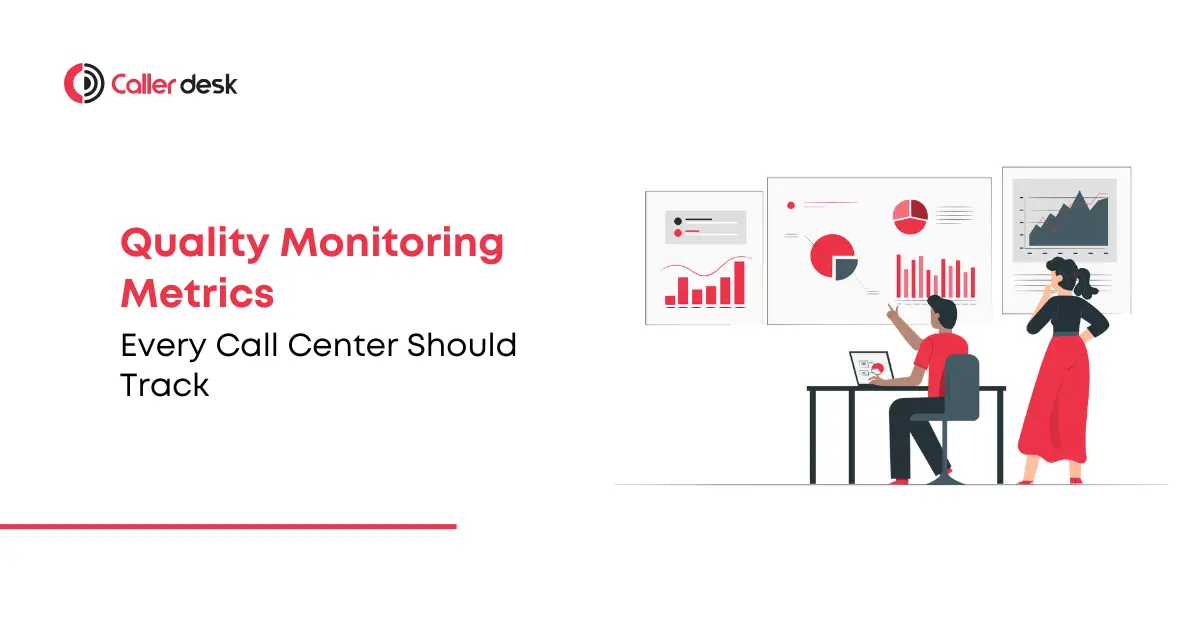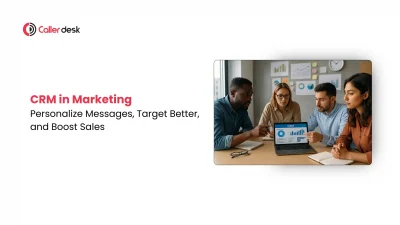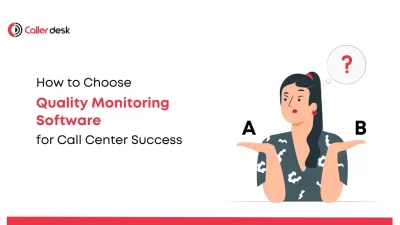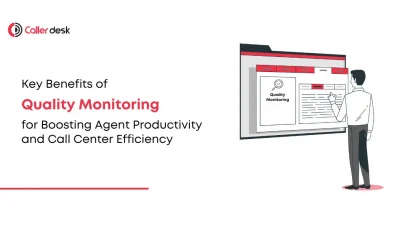Did you know that 89% of customers are more likely to return to a business after a positive call center experience, but 58% will switch to a competitor after just one negative interaction? This stark reality underscores the importance of delivering exceptional service through your call center. The key to achieving this lies in tracking and optimizing Quality Monitoring Metrics (QMM) to ensure every customer interaction is meaningful, efficient, and satisfactory.
Imagine a scenario: A customer calls in with a simple query but faces long hold times, multiple transfers, and receives incomplete answers. The result? Dissatisfaction, frustration, and a tarnished brand reputation. By effectively monitoring key metrics, call centers can pinpoint weaknesses, optimize agent performance, and create lasting positive impressions.
In this comprehensive guide, we’ll explore essential Quality Monitoring Metrics, their significance, and actionable strategies to leverage them for superior customer experiences.
What Are Call Quality Monitoring Metrics?
Call Quality Monitoring Metrics (QMM) are measurable indicators that help call centers evaluate the quality, efficiency, and effectiveness of customer interactions. They provide actionable insights into:
- Customer satisfaction levels.
- Agent performance and productivity.
- Operational efficiencies and inefficiencies.
By tracking these metrics, call centers gain a holistic view of their performance, enabling them to make data-driven decisions that improve service quality, agent engagement, and customer loyalty.
Why Are These Metrics Important?
Tracking the right metrics ensures that call centers can:
1. Ensure Consistency Across Customer Interactions
Metrics like CSAT and FCR help standardize the quality of service delivered by agents, ensuring customers receive the same level of care regardless of when or why they call.
2. Drive Continuous Improvement
By identifying areas of improvement, metrics guide call centers in refining processes, offering better training, and addressing recurring challenges.
3. Optimize Costs
Reducing call handling times and improving first-call resolutions directly impacts operational costs, enabling better resource allocation.
4. Build Customer Loyalty
Satisfied customers are more likely to stay loyal, recommend your services, and contribute to positive brand perception.
Essential Call Quality Monitoring Metrics
1. Customer Satisfaction (CSAT) Scores
CSAT measures how happy customers are with the service they received. After a call, customers are asked to rate their experience, usually on a scale of 1–5. The formula for CSAT is:
Why It Matters:
- Directly reflects customer happiness and service quality.
- Highlights trends in customer satisfaction over time.
Advanced Strategy for Improvement:
Use CallerDesk’s Feedback Collection Tool to gather real-time customer feedback. Analyze trends by segment (e.g., product category, region) to identify recurring pain points and address them promptly.
2. First Call Resolution (FCR)
FCR tracks the percentage of customer issues resolved during the initial interaction.
Why It Matters:
- Higher FCR indicates efficient problem-solving.
- Reduces the need for follow-up calls, lowering operational costs.
How to Improve FCR:
- Train agents to handle a variety of queries with confidence.
- Use AI-driven routing systems like CallerDesk’s Smart Routing to ensure customers connect with the right agent or department.
3. Net Promoter Score® (NPS)
NPS evaluates customer loyalty by asking, “How likely are you to recommend us to a friend or colleague?” Customers are categorized as Promoters, Passives, or Detractors.
Why It Matters:
- Predicts long-term customer loyalty and business growth.
- Helps identify brand advocates and areas requiring attention.
CallerDesk Advantage:
CallerDesk’s reporting tools integrate NPS surveys into the call workflow, ensuring seamless data collection and actionable insights.
4. Customer Effort Score (CES)
CES measures how easy it is for customers to get support. Lower effort correlates with higher satisfaction.
Why It Matters:
- Highlights barriers in customer journeys.
- Simplifies support processes for better experiences.
How to Reduce CES:
- Streamline IVR menus to minimize navigation.
- Automate routine tasks, like balance checks or appointment scheduling, using CallerDesk’s Workflow Automation.
5. Average Handle Time (AHT)
AHT is the average time an agent spends handling a call, including hold times and after-call work.
Why It Matters:
- Balances efficiency with service quality.
- Optimizes resource allocation for peak call times.
Advanced Strategy for Improvement:
Leverage AI tools to handle repetitive tasks, allowing agents to focus on resolving customer issues faster.
6. Call Abandonment Rate
The Call Abandonment Rate tracks the percentage of calls that end before being answered by an agent.
Why It Matters:
- High abandonment rates indicate customer dissatisfaction.
- Points to issues like long wait times or insufficient staffing.
How to Reduce Abandonment:
- Use callback options during peak times.
- Implement engaging on-hold messages to retain callers.
How to Use These Metrics Effectively
1. Set Clear Benchmarks
Establish measurable goals for each metric. For instance:
- Improve FCR to 85% within six months.
- Reduce AHT by 10% in the next quarter.
2. Use Real-Time Dashboards
Track performance metrics in real-time with tools like CallerDesk’s Analytics Dashboard. This ensures timely interventions and informed decision-making.
3. Train Agents Continuously
Use insights from metrics to identify skill gaps and implement targeted training programs.
4. Conduct Root Cause Analysis
Investigate the underlying causes of poor performance metrics, such as frequent call transfers or high abandonment rates.
CallerDesk Integration: Streamline Metrics Tracking
CallerDesk simplifies the process of tracking and improving quality monitoring metrics with:
- Customizable Dashboards: Tailor metrics to align with your business goals.
- AI-Driven Tools: Automate data collection and analysis for actionable insights.
- Scalable Solutions: Adapt seamlessly as your business grows.
Conclusion
Tracking key metrics like CSAT, FCR, NPS, and CES is essential for delivering exceptional customer service. By leveraging these metrics, call centers can:
- Improve agent performance.
- Enhance operational efficiency.
- Build stronger, long-lasting customer relationships.
With CallerDesk’s cutting-edge tools and real-time insights, you can take your quality monitoring strategy to the next level.
Ready to Transform Your Call Center?
Contact CallerDesk today to schedule a free demo and unlock the power of data-driven call center optimization.
Frequently asked questions
1. What are Call Quality Monitoring Metrics?
2. Why are Call Quality Monitoring Metrics Important?
3. How Can I Improve My CSAT Score in Call Centers?
Train agents to handle calls with empathy and professionalism.
Resolve issues on the first call to avoid repeat contacts.
Use feedback from quality monitoring to enhance customer interactions.





